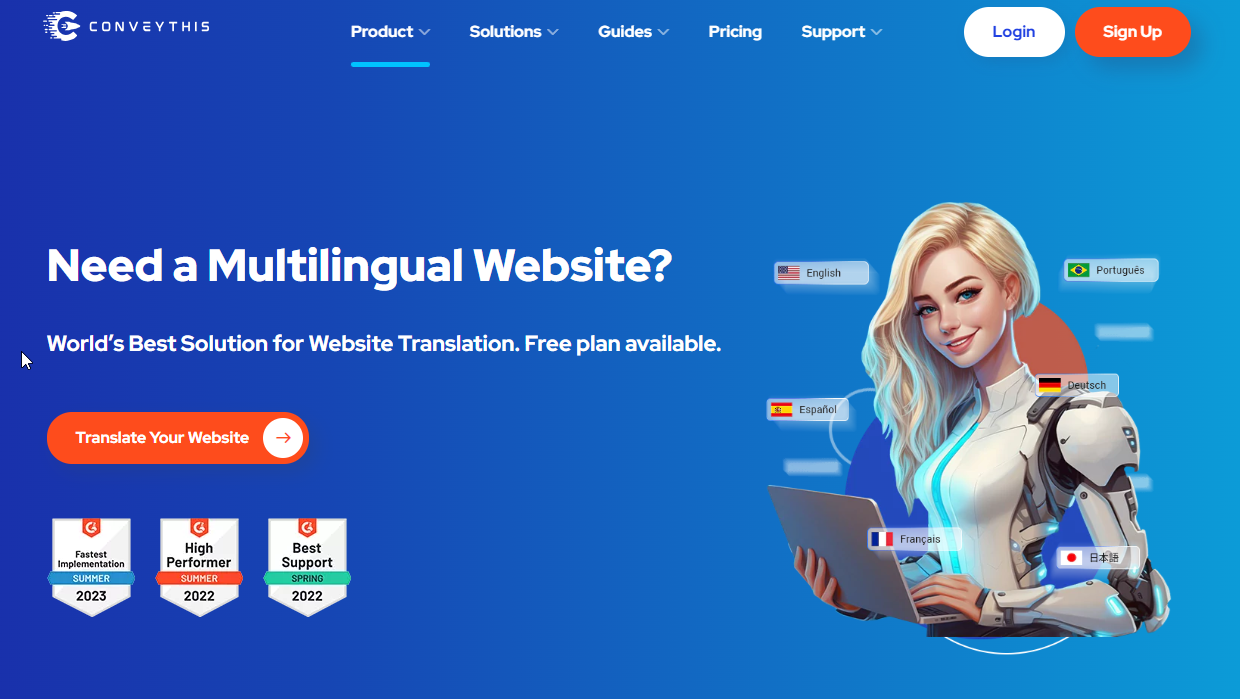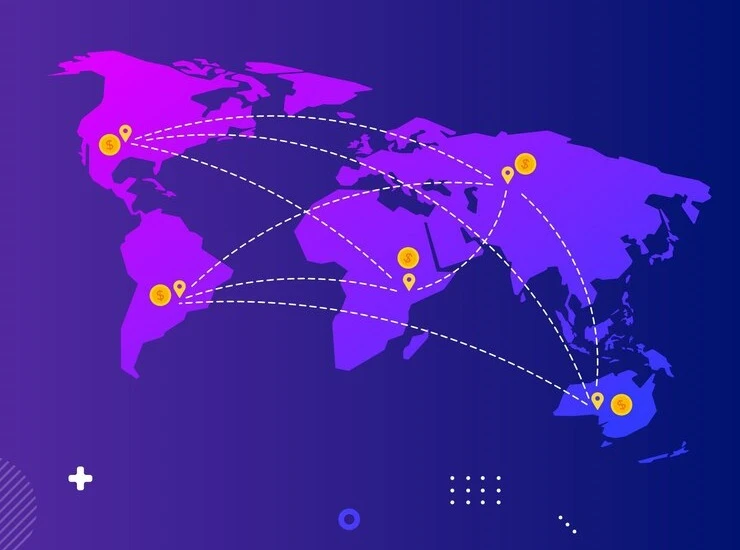Bản địa hóa nội dung là gì và bản địa hóa đóng vai trò quan trọng như thế nào trong việc xây dựng đối tượng khán giả quốc tế của bạn
“ Pepsi mang tổ tiên của bạn trở lại cuộc sống ” bằng chữ Trung Quốc là sản phẩm của việc dịch sai khẩu hiệu của thương hiệu này đôi khi thực sự là “Hãy sống lại cùng thế hệ Pepsi”
![]()
Các ví dụ trên cho thấy trước đây thường xảy ra lỗi dịch không chỉ trong tên thương hiệu hoặc khẩu hiệu mà còn nói chung khi dịch từ ngôn ngữ này sang ngôn ngữ khác. Đó là lý do tại sao bản địa hóa nội dung lại rất quan trọng. Bản địa hóa nội dung có nghĩa là cố gắng điều chỉnh hoặc điều chỉnh nội dung của bạn cho phù hợp với một địa điểm cụ thể để liên hệ và xác định được đối tượng tại địa điểm đó. Điều này không chỉ đơn thuần là dịch các từ trong ngôn ngữ nguồn sang ngôn ngữ đích. Nó liên quan đến việc đảm bảo rằng nội dung của bạn được sắp xếp theo cách có tính đến sự nhạy cảm về văn hóa địa phương. Điều này có lý vì có sự khác biệt về nhu cầu và sở thích ở một nền văn hóa so với một nền văn hóa khác.
Sẽ không khôn ngoan khi sử dụng cùng một cách tiếp cận cho mọi địa điểm bạn đang nhắm mục tiêu trên toàn thế giới vì điều này sẽ không thể hiện thương hiệu của bạn theo đúng cách mà nó nên có. Ví dụ, xu hướng hiện tại ở một vị trí địa lý có thể khác xa so với xu hướng ở một vị trí địa lý khác. Trên thực tế, đó là nơi sự khác biệt về ngôn ngữ phát huy tác dụng.
Ngày nay có nhiều loại ngôn ngữ. Nhiều người tiêu dùng sử dụng những ngôn ngữ này thích liên hệ với các thương hiệu bằng ngôn ngữ của trái tim họ. Như thể điều đó là chưa đủ, một nghiên cứu cho thấy tỷ lệ người tiêu dùng sẽ không mua sản phẩm vì nó không bằng ngôn ngữ của họ là 40% trong khi khoảng 65% cho biết họ thích liên hệ với nội dung bằng ngôn ngữ của riêng họ.
Trong quá trình bản địa hóa, dịch từ ngôn ngữ này sang ngôn ngữ khác là bước số một. Bởi vì bản địa hóa không chỉ là dịch thuật mà còn liên quan đến việc tạo ra nội dung và trải nghiệm độc đáo mà người tiêu dùng địa phương tại thị trường mục tiêu của bạn có thể nhanh chóng liên hệ. Khi bạn làm điều này, bạn không chỉ tạo ra mà còn xây dựng người tiêu dùng địa phương bền vững trên toàn cầu.
Bây giờ, chúng ta hãy tìm hiểu sâu hơn về bản địa hóa là gì.
Bản địa hóa nội dung là gì?
Bản địa hóa nội dung là một quá trình toàn diện vượt ra ngoài hành động dịch thuật đơn giản. Nó không chỉ bao gồm việc chuyển đổi ngôn ngữ của nội dung mà còn điều chỉnh và tùy chỉnh để phù hợp với nhu cầu văn hóa, xã hội và cảm xúc độc đáo của đối tượng mục tiêu. Quá trình này đảm bảo rằng thông điệp của thương hiệu của bạn không chỉ được hiểu mà còn được tiếp nhận tích cực và phù hợp, khiến nó phù hợp với bối cảnh địa phương.
Các lớp nội dung bản địa hóa
- Biên dịch : Đây là điểm khởi đầu của bản địa hóa, nơi văn bản gốc được dịch sang ngôn ngữ đích. Tuy nhiên, biên dịch không chỉ là thay thế các từ bằng các từ tương đương; mà còn là đảm bảo rằng ý nghĩa của thông điệp gốc vẫn được giữ nguyên. Bản dịch phải nắm bắt được sắc thái của ngôn ngữ, đồng thời tôn trọng các cách diễn đạt, thành ngữ và tham chiếu văn hóa địa phương. Ví dụ, một khẩu hiệu hoặc cụm từ hiệu quả bằng tiếng Anh có thể không có tác động tương tự ở ngôn ngữ khác do sự khác biệt về giọng điệu, sự hài hước hoặc cách lựa chọn từ ngữ. Đây là lý do tại sao các dịch vụ biên dịch chuyên nghiệp, đặc biệt là các dịch vụ chuyên về bản địa hóa, lại rất quan trọng.
- Thích ứng văn hóa : Bước này bao gồm việc điều chỉnh nội dung của bạn theo văn hóa địa phương. Các nền văn hóa khác nhau có các chuẩn mực xã hội, giá trị và kỳ vọng khác nhau. Nội dung phải phản ánh những khác biệt này để đảm bảo rằng nó tạo được tiếng vang với đối tượng mục tiêu tại địa phương. Điều này có thể bao gồm việc thay đổi các tham chiếu đến các sự kiện, ngày lễ hoặc truyền thống địa phương có thể xa lạ với đối tượng mục tiêu nước ngoài. Ví dụ: một chiến dịch tiếp thị sử dụng các tham chiếu đến Lễ Tạ ơn của người Mỹ có thể cần phải được điều chỉnh cho các thị trường ở những khu vực không tổ chức ngày lễ này. Ngoài ra, một số màu sắc, biểu tượng hoặc hình ảnh được coi là may mắn hoặc tốt lành ở một nền văn hóa có thể liên quan đến sự xui xẻo hoặc hàm ý tiêu cực ở một nền văn hóa khác. Do đó, sự nhạy cảm về văn hóa là chìa khóa trong việc bản địa hóa nội dung.
- Điều chỉnh tông giọng và giọng nói : Tông giọng và phong cách của nội dung đóng vai trò quan trọng trong cách thị trường mục tiêu cảm nhận. Một tông giọng thân thiện, đàm thoại có thể hiệu quả với một đối tượng, trong khi tông giọng trang trọng hoặc uy quyền hơn có thể hiệu quả hơn với đối tượng khác. Điều quan trọng là phải điều chỉnh tông giọng của thương hiệu sao cho phù hợp với sở thích của đối tượng. Ví dụ, tiếng Anh Anh và tiếng Anh Mỹ có thể dùng chung ngôn ngữ nhưng khác nhau về tông giọng—trong khi người Anh có thể thích cách tiếp cận trang trọng, giản dị hơn, người Mỹ có thể hướng tới phong cách thoải mái, trực tiếp hơn.
- Tùy chỉnh hình ảnh và thiết kế : Bản địa hóa không chỉ là về ngôn ngữ mà còn bao gồm việc điều chỉnh các yếu tố hình ảnh như hình ảnh, đồ họa, màu sắc và thiết kế để phù hợp hơn với sở thích và kỳ vọng về văn hóa của thị trường mục tiêu. Ví dụ, một chiến dịch tiếp thị hiệu quả ở một khu vực có thể cần thay đổi các yếu tố hình ảnh nếu chiến dịch đó được triển khai ở một thị trường có thị hiếu khác. Điều này có thể bao gồm việc điều chỉnh màu sắc, chọn hình ảnh phù hợp với văn hóa hoặc thậm chí là sửa đổi bố cục của trang web hoặc ứng dụng để phù hợp hơn với sở thích thiết kế của địa phương. Trong một số trường hợp, thậm chí cần phải tránh một số hình ảnh hoặc biểu tượng nhất định nếu chúng mang ý nghĩa tiêu cực không mong muốn trong nền văn hóa địa phương.
- Tuân thủ pháp lý và quy định : Mỗi thị trường có luật, quy định và tiêu chuẩn khác nhau chi phối quảng cáo, mô tả sản phẩm và nội dung. Việc bản địa hóa nội dung cũng bao gồm việc đảm bảo rằng nội dung đó tuân thủ các yêu cầu pháp lý này. Điều này có thể có nghĩa là tuân thủ các tiêu chuẩn quảng cáo, tôn trọng quyền sở hữu trí tuệ hoặc kết hợp các tuyên bố từ chối trách nhiệm cần thiết cho một số thị trường nhất định. Ví dụ, một số tuyên bố liên quan đến sức khỏe có thể được phép ở một quốc gia nhưng bị cấm ở quốc gia khác. Do đó, điều quan trọng là phải điều chỉnh nội dung của bạn để đáp ứng các yêu cầu pháp lý này trong khi vẫn truyền tải thông điệp của bạn một cách hiệu quả.
Lý do địa phương hóa là chìa khóa cho tăng trưởng toàn cầu. Người tiêu dùng càng cảm thấy gắn bó với thương hiệu của bạn thì họ càng sẵn sàng chi tiêu nhiều hơn
Bản địa hóa là một chiến lược quan trọng đối với các công ty muốn mở rộng dấu ấn toàn cầu và kết nối sâu sắc với người tiêu dùng địa phương. Mối liên hệ mà người tiêu dùng cảm thấy với thương hiệu của bạn ảnh hưởng trực tiếp đến quyết định mua hàng của họ. Khi mọi người cảm thấy thực sự được hiểu, tôn trọng và đồng điệu về mặt cảm xúc với một thương hiệu, họ có nhiều khả năng trở thành khách hàng trung thành, sẵn sàng chi tiêu nhiều hơn. Nghiên cứu hỗ trợ điều này, cho thấy 57% người tiêu dùng sẵn sàng tăng chi tiêu của họ khi họ cảm thấy gắn bó với một thương hiệu và 76% người tiêu dùng sẽ chọn một thương hiệu mà họ cảm thấy gắn bó hơn so với các đối thủ cạnh tranh.
Xây dựng kết nối với người tiêu dùng
Thiết lập mối liên hệ chặt chẽ với đối tượng mục tiêu của bạn là nền tảng cho sự phát triển. Không chỉ là bán sản phẩm hoặc dịch vụ; mà là hình thành mối quan hệ. Khi khách hàng cảm thấy gắn kết với một thương hiệu, họ cảm thấy được thấu hiểu, được coi trọng và thoải mái. Mối liên kết cảm xúc này có thể ảnh hưởng đáng kể đến mong muốn đầu tư vào thương hiệu của bạn, cả về mặt tài chính và lòng trung thành.
Để đạt được kết nối này, các doanh nghiệp phải tạo ra nội dung nói trực tiếp đến nhu cầu, sở thích và ưu tiên của đối tượng địa phương. Nội dung phải thể hiện sự quan tâm thực sự đến các giá trị, văn hóa và lối sống của người tiêu dùng. Bằng cách đó, bạn truyền đạt sự tôn trọng đối với cá tính của họ, thúc đẩy lòng tin và mối quan hệ.
Tại sao bản địa hóa lại quan trọng: Một ví dụ toàn cầu
Tác động của bản địa hóa có thể được minh họa thông qua các ví dụ đơn giản nhưng có sức thuyết phục. Ví dụ, hãy tưởng tượng việc cố gắng xuất bản một cuốn sách điện tử tập trung vào Nam Mỹ cho đối tượng ở khu vực Châu Á - Thái Bình Dương. Cách tiếp cận như vậy sẽ không liên quan đến sở thích và sự liên quan về văn hóa của đối tượng. Vấn đề tương tự cũng phát sinh khi cố gắng giới thiệu nội dung Châu Á - Thái Bình Dương cho đối tượng ở Châu Phi hoặc ngược lại. Những thị trường này rất đa dạng, với các giá trị văn hóa riêng biệt và việc xuất bản nội dung không phù hợp với chuẩn mực hoặc kỳ vọng của địa phương sẽ dẫn đến sự không liên quan và mất kết nối.
Bản địa hóa đảm bảo rằng nội dung của bạn có liên quan và phù hợp với sở thích và nhu cầu cụ thể của thị trường mục tiêu. Như câu nói cũ, "Kho báu của người này là rác rưởi của người khác"—nội dung hiệu quả với một khu vực có thể không hiệu quả ở khu vực khác. Đó là lý do tại sao việc tạo nội dung phù hợp với bối cảnh địa phương của đối tượng là chìa khóa để thâm nhập thị trường thành công.
Chiến lược cho việc bản địa hóa hiệu quả
Sau đây là các chiến lược chính để tạo nội dung bản địa hóa, xây dựng mối liên hệ thực sự với đối tượng mục tiêu của bạn:
1. Hãy cân nhắc lựa chọn từ ngữ của bạn :
Ngôn ngữ có sức mạnh, và ngay cả những khác biệt nhỏ trong cách lựa chọn từ ngữ cũng có thể ảnh hưởng đến cách tiếp nhận thông điệp của bạn. Từ ngữ và cụm từ có thể thay đổi rất nhiều giữa các vùng, ngay cả trong những quốc gia có cùng ngôn ngữ. Ví dụ, tiếng Anh Anh sử dụng "football", trong khi tiếng Mỹ sử dụng "soccer". Nếu một khách hàng người Anh truy cập trang web của bạn và nhận thấy có quá nhiều tham chiếu đến "soccer", họ có thể nhanh chóng cảm thấy rằng nội dung không dành cho họ.
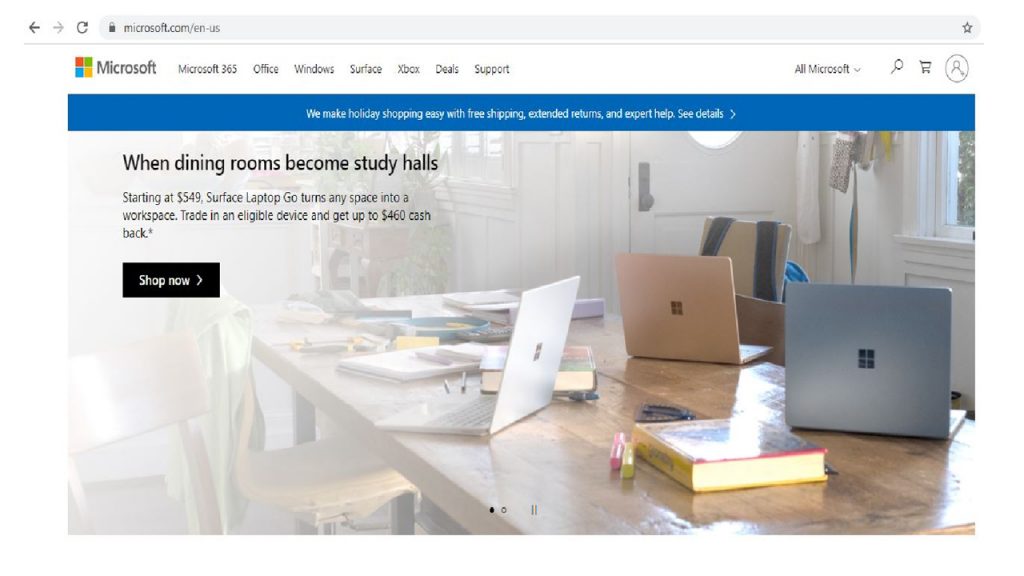
Các công ty như Microsoft bản địa hóa trang web của họ một chút giữa Hoa Kỳ và Vương quốc Anh, giới thiệu nội dung hấp dẫn theo sở thích ngôn ngữ của từng quốc gia.
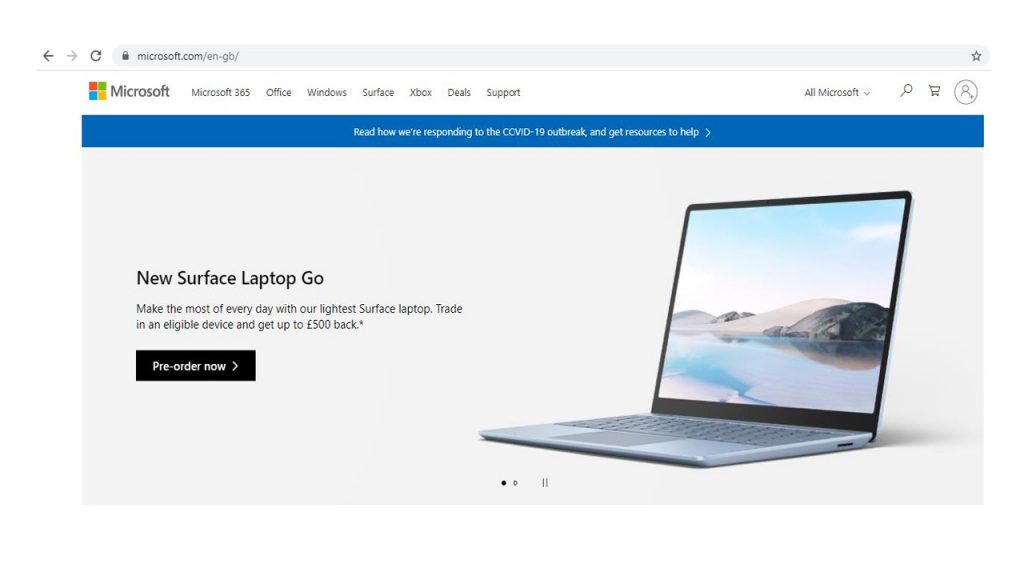
2. Chèn tham chiếu văn hóa âm nhạc địa phương:
Tài liệu tham khảo về văn hóa, bao gồm âm nhạc, người nổi tiếng, meme và các chủ đề thịnh hành, là những công cụ mạnh mẽ giúp nội dung của bạn gây được tiếng vang với khán giả địa phương. Âm nhạc, nói riêng, gắn liền sâu sắc với bản sắc của một khu vực và đóng vai trò chính trong việc định hình các cuộc trò chuyện về văn hóa. Ví dụ, việc tham khảo các nhạc sĩ địa phương nổi tiếng hoặc các lễ hội âm nhạc có thể ngay lập tức tạo ra mối liên hệ với khán giả, vì điều đó cho thấy bạn quen thuộc và đánh giá cao sở thích văn hóa của họ.
Tuy nhiên, những tham chiếu này có thể khác nhau rất nhiều giữa các khu vực. Những gì đang thịnh hành ở châu Âu có thể hoàn toàn xa lạ với khán giả ở châu Á. Một meme gây được tiếng vang với một nhóm người có thể không được nhóm người khác biết đến. Đây là lý do tại sao việc tiến hành nghiên cứu kỹ lưỡng về các xu hướng địa phương, bao gồm âm nhạc, meme và văn hóa người nổi tiếng, là điều cần thiết để đảm bảo rằng nội dung của bạn có cảm giác kịp thời và phù hợp.
3. Chia sẻ những câu chuyện có liên quan:
Kể chuyện là một phần cơ bản của văn hóa con người và khi được điều chỉnh cho phù hợp với đối tượng địa phương, nó có thể tạo nên những kết nối cảm xúc sâu sắc. Để thu hút đối tượng mục tiêu của bạn một cách hiệu quả, điều quan trọng là phải chia sẻ những câu chuyện phản ánh văn hóa, giá trị và trải nghiệm của họ. Việc cá nhân hóa này khiến nội dung có cảm giác phù hợp và cho thấy bạn hiểu bối cảnh địa phương.
Ví dụ, nếu nội dung của bạn hướng đến đối tượng khán giả là người châu Phi, việc kết hợp tên, cảnh quan và tập quán văn hóa châu Phi có thể khiến câu chuyện của bạn trở nên chân thực hơn. Điều quan trọng nữa là phải cân nhắc đến động lực xã hội, cấu trúc gia đình và giá trị địa phương khi xây dựng câu chuyện của bạn. Những câu chuyện giới thiệu về các anh hùng địa phương hoặc giải quyết các vấn đề quan trọng đối với khu vực, chẳng hạn như giáo dục, tính bền vững hoặc tinh thần kinh doanh, cũng có thể tạo được tiếng vang sâu sắc với khán giả.
Lấy cảm hứng từ thương hiệu xa xỉ Louis Vuitton, công ty đã bản địa hóa trang web và các nỗ lực tiếp thị của mình để tạo được tiếng vang hơn với người tiêu dùng Đức và Hà Lan, mặc dù tiếng Anh được hiểu rộng rãi. Bằng cách bản địa hóa ngôn ngữ và làm cho nội dung cụ thể hơn về mặt văn hóa, Louis Vuitton đã chứng kiến tỷ lệ chuyển đổi tăng lên ở những khu vực đó. Cách tiếp cận này nhấn mạnh tầm quan trọng của việc không chỉ dịch nội dung mà còn điều chỉnh nội dung để phản ánh văn hóa và sở thích của địa phương, tăng tính liên quan của thương hiệu đối với đối tượng mục tiêu địa phương.
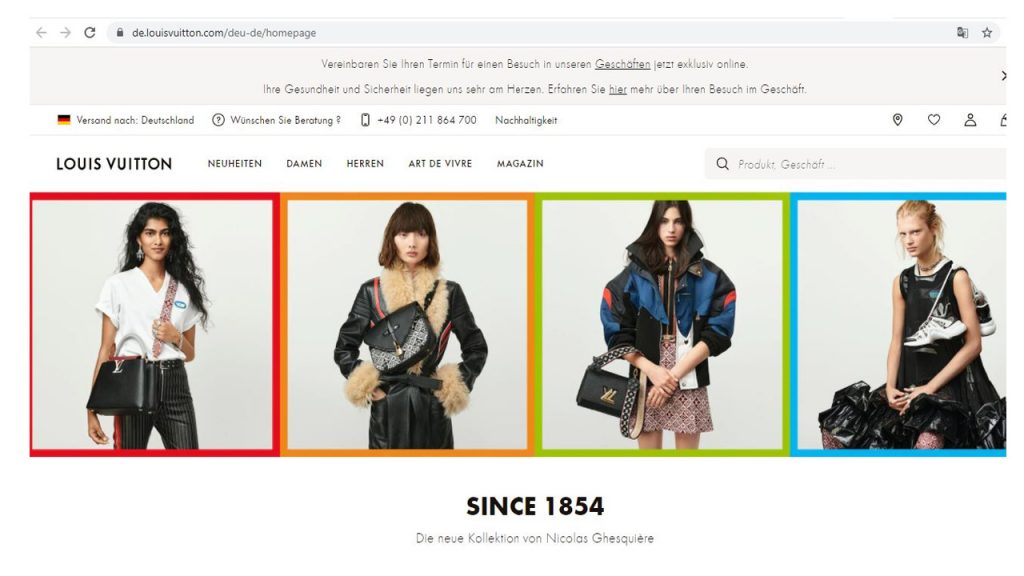
4. Duy trì mối quan hệ sâu sắc với khách hàng trung thành của bạn:
Khách hàng trung thành là một trong những tài sản giá trị nhất mà một thương hiệu có thể có. Họ không chỉ mua hàng lặp lại mà còn trở thành người ủng hộ thương hiệu, những người chia sẻ những trải nghiệm tích cực của họ với bạn bè, gia đình và mạng xã hội. Tiếp thị truyền miệng này vô cùng giá trị vì nó đến từ các nguồn đáng tin cậy và có thể dẫn đến tăng nhận thức về thương hiệu và doanh số bán hàng.
Để nuôi dưỡng lòng trung thành, điều quan trọng là duy trì mối quan hệ bền chặt với khách hàng của bạn, đặc biệt là ở các khu vực khác nhau. Mối quan hệ này vượt ra ngoài các tương tác giao dịch đơn giản; đó là về việc cung cấp giá trị liên tục, thể hiện sự trân trọng và duy trì kết nối thông qua giao tiếp được cá nhân hóa. Khách hàng trung thành thường dễ tha thứ cho những sai lầm và có nhiều khả năng sẽ cho thương hiệu của bạn một cơ hội khác nếu bạn tiếp tục thể hiện rằng bạn quan tâm.
Xây dựng cơ sở khách hàng trung thành đòi hỏi sự tương tác thường xuyên thông qua email, ưu đãi và chương trình khách hàng thân thiết được bản địa hóa đáp ứng nhu cầu và sở thích riêng biệt của khách hàng ở các khu vực khác nhau. Đổi lại, những khách hàng này sẽ ủng hộ thương hiệu của bạn, giúp xây dựng uy tín và lòng tin ở các thị trường mới. Họ cũng có thể giúp truyền bá thông điệp của bạn thông qua các bài đánh giá trực tuyến, bài đăng trên mạng xã hội hoặc chỉ đơn giản là giới thiệu sản phẩm của bạn cho người khác, từ đó thúc đẩy tăng trưởng.
5. Xuất hiện trong kết quả tìm kiếm địa phương:
Hành vi tìm kiếm thay đổi đáng kể giữa các khu vực khác nhau. Mọi người ở các địa điểm khác nhau sử dụng các cụm từ và thuật ngữ riêng biệt khi tìm kiếm sản phẩm hoặc dịch vụ. Nếu trang web của bạn không được bản địa hóa để phản ánh các hành vi tìm kiếm theo khu vực này, khả năng hiển thị của bạn trong kết quả tìm kiếm cục bộ sẽ bị hạn chế.
Lấy ví dụ về "bóng đá" và "bóng bầu dục", nếu bạn nhắm mục tiêu đến đối tượng người Mỹ và nội dung của bạn sử dụng thuật ngữ "bóng bầu dục" (thường được sử dụng ở châu Âu), đối tượng người Mỹ của bạn có thể không bao giờ tìm thấy trang web của bạn khi họ tìm kiếm "bóng đá". Bằng cách bản địa hóa nội dung của bạn một cách phù hợp và kết hợp các từ khóa cụ thể theo khu vực, bạn sẽ tăng cơ hội xếp hạng tốt trong kết quả tìm kiếm địa phương và thu hút lưu lượng truy cập vào trang web của mình.
Bản địa hóa nội dung không chỉ có nghĩa là dịch văn bản mà còn bao gồm việc điều chỉnh các từ khóa, cụm từ và thậm chí là cấu trúc nội dung của bạn để phù hợp với xu hướng tìm kiếm cục bộ. Hiểu các thuật ngữ và cách diễn đạt thường được sử dụng ở mỗi thị trường là điều cần thiết để cải thiện thứ hạng công cụ tìm kiếm của bạn và đảm bảo rằng nội dung của bạn tiếp cận đúng đối tượng.
6. Tạo ra trải nghiệm mua sắm được cá nhân hóa:
Trải nghiệm mua sắm được cá nhân hóa là yếu tố quan trọng để chuyển đổi khách truy cập thành khách hàng trung thành. Một trong những rào cản lớn đối với việc mua hàng trực tuyến, đặc biệt là trên thị trường toàn cầu, là lòng tin. Nếu trang web của bạn không hỗ trợ các phương thức thanh toán thường được sử dụng trong thị trường mục tiêu, bạn có nguy cơ mất đi những khách hàng thích mua sắm bằng các cổng thanh toán mà họ biết và tin tưởng.
Ví dụ, Boleto Bancário là phương thức thanh toán phổ biến ở Brazil và nếu bạn không cung cấp tùy chọn thanh toán này, khách hàng Brazil có thể từ bỏ giỏ hàng của họ để chuyển sang các thương hiệu có cung cấp. Bằng cách cung cấp nhiều phương thức thanh toán địa phương, chẳng hạn như ví di động, chuyển khoản ngân hàng địa phương hoặc thẻ tín dụng khu vực, bạn sẽ tăng cơ hội đảm bảo doanh số bán hàng.
Cá nhân hóa không chỉ giới hạn ở phương thức thanh toán mà còn mở rộng đến toàn bộ trải nghiệm mua sắm. Bản địa hóa có nghĩa là điều chỉnh ngôn ngữ, tiền tệ, sản phẩm cung cấp và thậm chí cả tùy chọn vận chuyển của trang web để phù hợp với sở thích của thị trường địa phương. Ví dụ, ở một số quốc gia, khách hàng có thể thích tùy chọn giao hàng miễn phí hoặc giao hàng nhanh, trong khi ở những quốc gia khác, họ có thể ưu tiên phương thức thanh toán an toàn hoặc hỗ trợ khách hàng tại địa phương. Bằng cách giải quyết những nhu cầu và sở thích cụ thể này, bạn tạo ra một môi trường mà khách hàng cảm thấy thoải mái, được tôn trọng và tự tin vào quyết định mua hàng của mình.
Các bước tiếp theo trong bản địa hóa: Bắt đầu hành trình của bạn
Bắt đầu hành trình bản địa hóa là bước then chốt đối với các doanh nghiệp muốn mở rộng phạm vi tiếp cận và kết nối với nhiều đối tượng khác nhau trên toàn thế giới. Mặc dù quá trình này có vẻ khó khăn, nhưng không nhất thiết phải như vậy. Với phương pháp và công cụ phù hợp, chẳng hạn như ConveyThis, bạn có thể điều chỉnh nội dung của mình một cách hiệu quả và hiệu suất cho các thị trường cụ thể, nâng cao sự hiện diện toàn cầu của bạn. Sau đây là phân tích chi tiết hơn về các bước tiếp theo để hướng dẫn bạn trong suốt quá trình bản địa hóa của mình:
1. Phân tích thị trường mục tiêu của bạn
Bước đầu tiên trong hành trình bản địa hóa của bạn là hiểu thị trường mà bạn đang nhắm đến. Bản địa hóa không phải là một quy trình áp dụng cho tất cả mọi người—nó đòi hỏi sự hiểu biết sâu sắc về các sắc thái văn hóa, ngôn ngữ và xã hội của các khu vực mà bạn muốn tiếp cận.
- Sở thích văn hóa: Mỗi thị trường đều có những giá trị, truyền thống và chuẩn mực văn hóa riêng. Ví dụ, sự hài hước hoặc hình ảnh được ưa chuộng ở một quốc gia có thể bị hiểu lầm hoặc gây khó chịu ở quốc gia khác. Bằng cách tiến hành nghiên cứu về văn hóa địa phương và hành vi của người tiêu dùng, bạn có thể đảm bảo rằng nội dung của mình phù hợp với phong tục, giá trị và kỳ vọng của địa phương.
- Những cân nhắc về ngôn ngữ: Ngôn ngữ là cốt lõi của bản địa hóa, nhưng nó không chỉ đơn thuần là bản dịch. Hãy chú ý đến phương ngữ, tiếng lóng và các biến thể vùng miền của ngôn ngữ. Ví dụ, tiếng Tây Ban Nha được nói ở Mexico có thể khác đáng kể so với tiếng Tây Ban Nha được nói ở Tây Ban Nha. Nhận thức được những khác biệt này và điều chỉnh nội dung của bạn cho phù hợp sẽ đảm bảo rằng thông điệp của bạn vừa rõ ràng vừa phù hợp với văn hóa.
- Xu hướng xã hội: Hiểu các xu hướng xã hội định hình từng thị trường. Bao gồm các chủ đề phổ biến, sự kiện hiện tại và các phong trào mới nổi. Ví dụ, một chiến dịch bảo vệ môi trường có thể hiệu quả hơn ở các quốc gia tập trung mạnh vào tính bền vững, trong khi các thị trường khác có thể có các ưu tiên khác nhau. Bằng cách liên kết nội dung của bạn với các xu hướng này, bạn có thể thu hút đối tượng mục tiêu của mình một cách có ý nghĩa hơn.
2. Đầu tư vào các công cụ phù hợp để bản địa hóa
Sử dụng một nền tảng bản địa hóa đáng tin cậy và hiệu quả, chẳng hạn như ConveyThis, có thể giúp quá trình này diễn ra suôn sẻ hơn đáng kể. Các công cụ như thế này cung cấp nhiều tính năng giúp đơn giản hóa việc dịch nội dung, đảm bảo tính nhất quán và tự động hóa phần lớn công việc liên quan đến việc bản địa hóa trang web và tài liệu tiếp thị của bạn.
- Dịch tự động: ConveyThis và các công cụ bản địa hóa khác có thể giúp bạn dịch nội dung của mình một cách nhanh chóng và chính xác. Bằng cách sử dụng bản dịch máy làm điểm khởi đầu, sau đó là quá trình xem xét và điều chỉnh của con người, bạn có thể đảm bảo cả tốc độ và chất lượng trong việc phân phối nội dung của mình.
- Hỗ trợ đa ngôn ngữ: Nền tảng bản địa hóa cung cấp khả năng quản lý nhiều ngôn ngữ và khu vực cùng lúc. Điều này cho phép bạn dễ dàng mở rộng quy mô nỗ lực và quản lý bản dịch trên nhiều ngôn ngữ khác nhau mà không mất dấu vết nội dung nào đã được điều chỉnh cho thị trường nào.
- Tính nhất quán trên khắp các thị trường: Duy trì giọng điệu và thông điệp thương hiệu nhất quán trên nhiều ngôn ngữ và khu vực khác nhau là rất quan trọng. Các công cụ bản địa hóa giúp duy trì tông điệu và phong cách của thương hiệu của bạn trong khi điều chỉnh nội dung cho phù hợp với sở thích của người dân địa phương. Tính nhất quán này củng cố bản sắc thương hiệu của bạn và xây dựng lòng tin với đối tượng mục tiêu.
3. Điều chỉnh nội dung theo nhu cầu địa phương
Sau khi bạn đã thu thập được thông tin chi tiết về thị trường mục tiêu và chọn đúng công cụ bản địa hóa, đã đến lúc điều chỉnh nội dung của bạn để đáp ứng nhu cầu của địa phương. Điều này không chỉ đơn thuần là dịch thuật mà còn mở rộng đến việc điều chỉnh nội dung cho phù hợp với văn hóa.
- Điều chỉnh hình ảnh và đồ họa: Màu sắc, biểu tượng và hình ảnh có thể có ý nghĩa khác nhau ở các nền văn hóa khác nhau. Đảm bảo rằng hình ảnh được sử dụng trong nội dung của bạn phù hợp với văn hóa địa phương và không vô tình gây khó chịu. Ví dụ, màu sắc tượng trưng cho may mắn ở một quốc gia có thể tượng trưng cho sự bất hạnh ở một quốc gia khác.
- Bản địa hóa các sản phẩm cung cấp: Các thị trường khác nhau có nhu cầu khác nhau. Ví dụ, các sản phẩm hoặc dịch vụ hấp dẫn đối tượng khán giả Bắc Mỹ có thể không phù hợp hoặc không mong muốn ở Trung Đông hoặc Châu Á. Bản địa hóa các sản phẩm cung cấp, chương trình khuyến mãi và thậm chí là chiến lược giá của bạn có thể giúp bạn đáp ứng tốt hơn nhu cầu của từng khu vực.
- Trải nghiệm người dùng cục bộ (UX): Trải nghiệm người dùng tích cực là chìa khóa để giữ chân khách hàng. Hãy cân nhắc sở thích của người dân địa phương trong thiết kế và điều hướng trang web của bạn. Ví dụ, ở một số khu vực, hướng văn bản từ phải sang trái được ưa chuộng hoặc có thể cần các cổng thanh toán cụ thể để có quy trình giao dịch liền mạch.
Bằng cách làm theo các bước này và sử dụng các công cụ như ConveyThis, bạn có thể bắt đầu hành trình bản địa hóa của mình một cách tự tin. Bản địa hóa không chỉ là về dịch thuật; mà là về việc tạo ra trải nghiệm cá nhân hóa và hấp dẫn hơn cho đối tượng toàn cầu của bạn. Khi thực hiện tốt, bản địa hóa có thể mở ra những cơ hội mới, củng cố mối quan hệ với khách hàng và thúc đẩy tăng trưởng xuyên biên giới.
Phần kết luận:
Tóm lại, các ví dụ về bản dịch sai của Pepsi và Coca-Cola là lời nhắc nhở rõ ràng về vai trò quan trọng của bản địa hóa nội dung trong thành công của một thương hiệu. Những trường hợp này nêu bật cách thức dễ dàng mà việc thiếu nhận thức về văn hóa và độ chính xác về ngôn ngữ có thể dẫn đến hiểu lầm, làm hoen ố danh tiếng hoặc thậm chí là không kết nối được với cơ sở khách hàng tiềm năng. Chúng nhấn mạnh rằng bản địa hóa không chỉ đơn thuần là dịch văn bản—đó là một quá trình toàn diện đòi hỏi sự hiểu biết sâu sắc về văn hóa địa phương, chuẩn mực xã hội và sở thích của người tiêu dùng.
Bản địa hóa không chỉ cần thiết để truyền tải thông điệp của bạn một cách rõ ràng mà còn để điều chỉnh bản sắc thương hiệu, giọng điệu và trải nghiệm tổng thể của bạn để phù hợp với cảm xúc, giá trị và kỳ vọng của đối tượng mục tiêu. Đó là về việc tạo ra một thông điệp có cảm giác chân thực và dễ liên hệ, đảm bảo rằng thương hiệu của bạn giao tiếp trực tiếp với người tiêu dùng theo cách mang tính cá nhân và có ý nghĩa. Mục tiêu là thiết lập một kết nối thực sự, nơi khách hàng không chỉ hiểu thông điệp của bạn mà còn coi thương hiệu của bạn là một thực thể có giá trị, đáng tin cậy trong cuộc sống của họ.
Khi được tiếp cận một cách chu đáo và có chiến lược, bản địa hóa nội dung có sức mạnh mở ra những cơ hội toàn cầu to lớn cho các doanh nghiệp. Bằng cách điều chỉnh các dịch vụ của bạn theo nhu cầu văn hóa và ngôn ngữ cụ thể của từng thị trường, bạn có thể thúc đẩy mối quan hệ sâu sắc hơn, xây dựng lòng trung thành của khách hàng và khuyến khích sự gắn kết lâu dài. Cho dù đó là thông qua việc điều chỉnh các yếu tố trực quan, điều chỉnh tông màu hay cung cấp nội dung cụ thể theo khu vực, bản địa hóa cung cấp một nền tảng để các thương hiệu tạo ra tác động lâu dài.
Hơn nữa, lợi ích của bản địa hóa vượt xa việc chỉ tạo nội dung bằng các ngôn ngữ khác nhau. Đó là về việc tạo ra toàn bộ trải nghiệm của khách hàng thể hiện các đặc điểm và kỳ vọng riêng biệt của từng khu vực. Từ thiết kế giao diện người dùng đến phương thức thanh toán và chiến dịch tiếp thị, mọi khía cạnh của điểm tiếp xúc thương hiệu của bạn đều phải phản ánh các giá trị và sở thích của người tiêu dùng địa phương.
Các thương hiệu đầu tư thời gian và nguồn lực vào quy trình này đang định vị bản thân để tăng trưởng và thành công bền vững trên quy mô toàn cầu. Bản địa hóa trao quyền cho các công ty không chỉ tăng chuyển đổi và mở rộng phạm vi thị trường mà còn hiểu sâu hơn về khách hàng toàn cầu của họ. Kiến thức và hiểu biết này mở đường cho những cải tiến liên tục, thâm nhập thị trường trong tương lai và vun đắp một cơ sở khách hàng trung thành thực sự gắn bó với thương hiệu của bạn.
Cuối cùng, bản địa hóa là một công cụ mạnh mẽ có thể giúp các thương hiệu tạo sự khác biệt trên thị trường toàn cầu cạnh tranh. Đó là khoản đầu tư vào việc hiểu và phục vụ các nhu cầu đa dạng của người tiêu dùng, đảm bảo rằng thương hiệu của bạn tạo được tiếng vang và phát triển mạnh mẽ ở mọi thị trường mà bạn tham gia. Những câu chuyện thành công của các thương hiệu đã áp dụng bản địa hóa chứng minh rằng chiến lược này không còn là tùy chọn nữa mà là điều cần thiết đối với bất kỳ công ty nào muốn mở rộng ra quốc tế và xây dựng mối quan hệ lâu dài, có ý nghĩa với khách hàng trên toàn thế giới.
Tài nguyên bổ sung:
- ConveyThis Tích hợp – Để khám phá khả năng tương thích với WordPress.
- Cách dịch WordPress – Để biết thêm hướng dẫn.
- Hướng dẫn trợ giúp dịch trang web WordPress – Hỗ trợ từng bước.
- Bài viết có liên quan của Alexika – Để tìm hiểu thêm về chủ đề này.
Biên dịch không chỉ đơn thuần là biết nhiều ngôn ngữ mà còn là một quá trình phức tạp.
Bằng cách làm theo các mẹo của chúng tôi và sử dụng ConveyThis, các trang đã dịch của bạn sẽ gây được tiếng vang với độc giả, mang lại cảm giác gần gũi với ngôn ngữ đích.
Mặc dù đòi hỏi nỗ lực, nhưng kết quả sẽ xứng đáng. Nếu bạn đang dịch một trang web, ConveyThis có thể giúp bạn tiết kiệm hàng giờ với dịch máy tự động.
Dùng thử ConveyThis miễn phí trong 3 ngày!
 Không có thông tin chi tiết về thẻ
Không có thông tin chi tiết về thẻ


